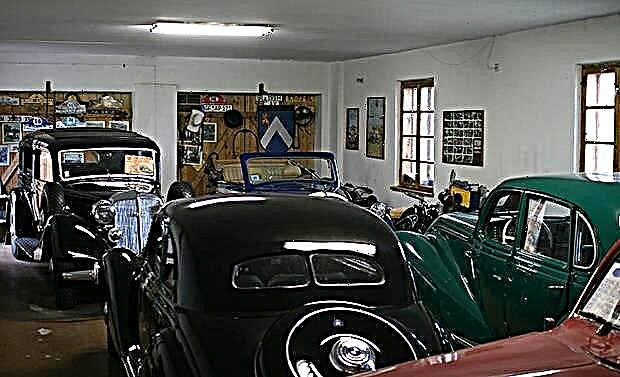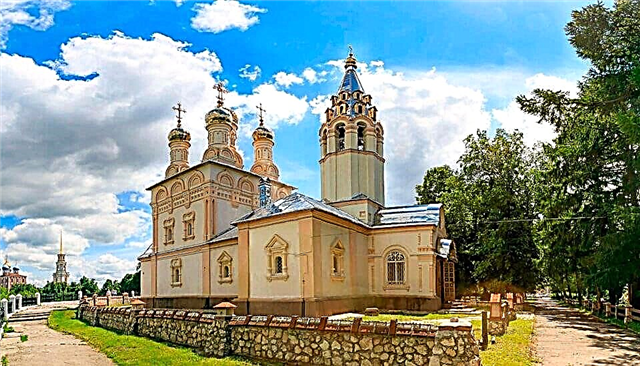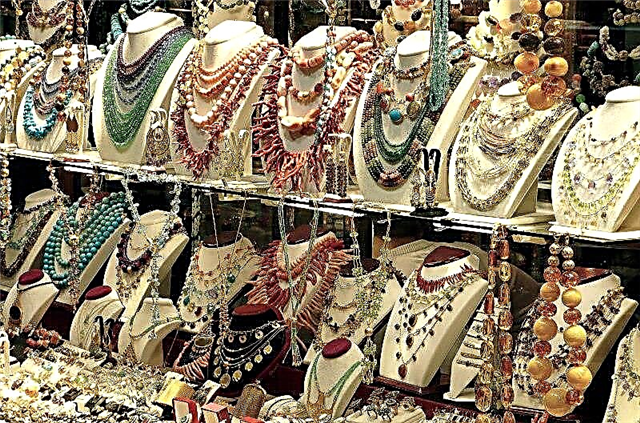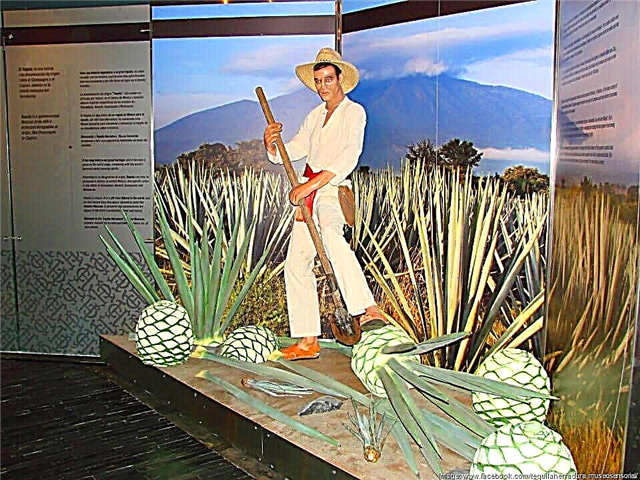Cancun is in the TOP 5 of the best resort cities. It appeared on the site of a small fishing village, but today this city has become the most important center of international tourism. Russian tourists appreciated the pristine beaches and warm sea, exotic nature and interesting places that you could only read about before, but today you can visit them yourself. The city is located on the Yucatan Peninsula. Many vacationers are attracted by the resort area, and all because the city is located between the Nichupte lagoon and the Caribbean Sea. All kinds of shops, discos, yacht clubs, cafes, restaurants, hotels and other places for entertainment are located along the 25 km long sandy spit. But not only nature and gentle sea attracts tourists from all over the world. Most visitors to the city are attracted by the monuments, architecture of the Mayan civilization. Let's talk about the most interesting sights of Cancun.
Chichen Itza

The first place in popularity and attendance belongs to the Mayan city of Chichen Itza. Since 2007, this city is one of the seven wonders of the world. Chichen Itza is the political and cultural center of the Mayan tribes. The most prominent feature in Chichen Itza is the pyramid of Kukulkan. The city of Chichen Itza has been designated by UNESCO as an object of world cultural heritage. The city also ranks 2nd in terms of attendance among tourists and archaeologists.
In the process of archaeological work on the territory of Chichen Itza, the most valuable monuments of culture and architecture of past centuries were found:
- Temple of Kukulkan
- Military temple in Chichen Itza observatory "Karakol"
- Large field for ball games or 7 "stadiums" for ball games
- Ruins of 4 colonnades ("Group of a thousand columns")
- Sacred cenote (natural well)
To all this, you can add more monuments to the Gods, amazingly beautiful landscapes and works of art. All this can be seen by visiting the city of Chichen Itza. But this is not the only Mayan city that is close to Cancun. This also includes the cities of Koba (entrance costs $ 50), Tulum, Ek Balam, etc. At one of the highest points of the resort are the ruins of Yamil Luum.
In the XIII-XV centuries. on this place there were 2 temples: the Temple of Scorpio and the Temple of the Hand. And now only the floors and walls have survived. Not far from these ruins, there are hotels, which are often visited by tourists to enjoy the picturesque view of the archaeological site. It is this fact that gives hotels such popularity and demand.
Island of Women

Isla Mujeres is the Spanish name for the island. It is considered the northernmost point of Mexico. The city and the island are separated by a strait, through which there is a ferry service. The total area of Isla Mujeres is over 8 hectares. Latin American mystics call it a place of power. The island is home to about 12-13 thousand people, there are modern hotels, 4 main beaches, restaurants. Next to them there is a turtle farm, a national park, and an airport.
On the territory of Isla Mujeres, buildings have been preserved that remind of pirates and the times when fishermen lived here. One of the famous landmarks of the island: the sculpture park near the ruins of the temple of the Mayan goddess Ischel. In the pre-Columbian era, on a small area of land, there were cult settlements, altars of the formidable and beautiful wife of the supreme god of the Indians. The serpent, the moon and the rainbow were considered the symbols of Ischel. The Maya believed: the mother goddess bestows prosperity, health, wisdom, magic, heals from infertility, diseases. To placate her, human sacrifices were made.
Christianity that came to Latin America could not completely destroy the cult of Isçchel: ancient traditions were transformed into new customs. Images of the goddess can be seen everywhere today on Mexican household items. Inhabitants of the island, tourists strive to meet the dawn of the first day of the year at Cape Punta Sur - next to the ruined temple of the goddess - in the hope of finding happiness, health and good luck.
Cenote Seven Mouths

On the territory of Mexico in the rocks there are a huge number of natural wells (cenotes). The Seven Mouths is one of them. Such an unusual name is quite understandable, because the ancient Indians considered each well to be the mouth of the earth. They revered water, believed that cenotes were sacred. Mystics today recognize natural wells as places of power. Healers and healers are advised to visit cenotes for cleansing from negativity, curing diseases, enlightenment.
Even those who are far from traditional medicine, note the special atmosphere of the system of wells "Seven Mouths", connected by a huge cave. The depth of water in cenotes, where fish live, reaches 150 meters. Stalactites and stalagmites grow inside the cave. The role of light sources is played by natural holes and cracks in hard rocks. Cenote is a historical and natural monument.
Indian priests performed sacrifices and magic rituals here. Today the well system is open to visitors, bathing, individual and private excursions. The natural monument is located in a private area near Cancun. To get to this unique place, the townspeople and tourists rent buses.
Cenote Ik-Kil

The natural fresh water well is considered the most popular in Mexico. A mysterious place like a magnet attracts tourists who come to the well from Cancun and other cities in Mexico. The history of Ik-Kil is not full of horrific details about human sacrifice. Distance between the water in the well and the surface of the earth: 25 meters. Ik-Kil is called one of the safest Mexican cenotes. The water level (it is home to miniature black carps) reaches 20 meters.
You can go down to the cenote by a stone staircase adjacent to the wall. Inside the well there are 2 observation platforms, a diving tower, and an artificial beach. To enter the cenote territory, each visitor must take a shower in a place specially designated for hygiene procedures. On the surface next to a natural reservoir there are: 2 mid-range hotels, souvenir shops, a life jacket rental, a restaurant, a motel.
Cenote Hubiku

A natural well by tourists, Mexicans recognize it as “the king of beauty among cenotes”. Visiting a local attraction is included in various sightseeing tours. Hubiku in the language of the ancient Maya means "great lord", the word has another interpretation: "iguana's nest." The herbivorous lizard was and remains among the Indians a sacred animal, a messenger of the gods. Its symbol is polysemantic, often found in ancient inscriptions and drawings. Iguana reminds you to live in the present; according to Latin American beliefs, it relieves you of the burden of the past.
It takes over 100 steps from the surface of the earth to the water mirror. The water in “Hubiku” is cooler than in the cenote “Ik-Kil”, but it is also very pleasant for swimming. The "Great Lord" has a spherical shape, which creates a special atmosphere of comfort in the cave. The depth of water in a natural well, where small fish live, is 27-30 meters. Bowl diameter: about 50 meters. The natural monument looks especially impressive at noon, when direct sunlight penetrates through the vault.
Museum of underwater sculptures

The unique collection is abbreviated as "MUSA". The museum opened in 2010, covers an area of 420 square meters, consists of two main underwater galleries. About 500 sculptures made of marine concrete, set on special bases, make up his original collection.The author of the project - British artist, public figure Jason de Cayres Taylor - is known for his diverse works aimed at protecting the environment.
Each sculpture depicts a person belonging to a certain nationality, the era of the development of civilization. Taylor called the collection "Silent Evolution", emphasizing the philosophical idea of the project and the practical aspect of the placement of figures. The sculptures look realistic, people are captured in moments of movement, emotional experiences. Polyps, algae, lime deposits gradually cover the figures.
The last centuries later will become part of coral reefs, will protect the coast from erosion (erosion by waves). The museum offers boat trips with a glass bottom, underwater diving, children's entertainment and educational programs.
Shel-Ha Park

Distance between Ecopark and Cancun: about 100 kilometers. Shel-Ha is named after the lagoon of the same name. On its territory are the ruins of one of the largest ancient ports in America, 20 modern attractions and entertainment facilities. The park also includes a natural aquarium, where you can swim with dolphins, stingrays, and see numerous inhabitants of the Caribbean Sea.
Among the popular entertainments in Shel-Ha, the leaders are: jungle trekking, diving to the bottom of the lagoon, walking on air bicycles, visiting a temazcal (traditional Indian bath), jumping into the water from the Rock of Courage. The park is aimed at outdoor enthusiasts of all ages. The most famous natural attractions of Shel-Ha: grottoes of the Mayan goddess Ishchel and Eldorado, cenote wells (even those who do not have diving skills can dive in them), a tree where a bee swarm lives.
The latter is interesting in that it is intended for obtaining honey. The bees living in its trunk have no sting. The employees of the park hold a solemn ceremony of extracting delicacies, like the ancient Mayans (who invented simple and inexpensive biotechnology), 2 times a year on a full moon.
Park Xcaret

The most famous national park in Mexico is named after a Mayan settlement. The latter existed in its place in the pre-Columbian era. Archaeological sites have been partially preserved, next to them there are 40 attractions, shops, restaurants, wildlife corners, a theater, a giant aquarium, and a hotel. Distance from Cancun to Ecopark (open to the public since 1991): 75 kilometers. Archaeologists and restorers have managed to restore the ancient Mayan pyramids and buildings.
Shkaret occupies over 80 hectares. Its structure includes reserves with wild animals, birds, several museums, numerous pavilions, galleries where you can see butterflies living in natural conditions, a unique collection of orchids. An 80-meter observation tower is located in the center of Xcaret. 3 rivers flow through its territory, which flow into the Caribbean Sea, washing the coastal park zone. Its famous landmarks include two Catholic churches and a cemetery.
The latter is partly real: there are no graves, and the gravestones are genuine. On the annual national day of remembrance of the dead, a fancy-dress procession is organized to the "field of God", as in all major cities of Mexico. Ecopark show programs are designed for adults and children, the most popular performances among visitors: "Flying People", dolphin performances, rodeos.
La Isla Shopping Center

"La Isla Shopping Village" guides, travel guides are called a paradise for shoppers. Travelers compare the shopping complex with little Venice. Over 200 world and Latin American brands offer their products here: clothes, shoes, accessories. In "La Isla" you can buy jewelry, original souvenirs, luxury cosmetics. On the territory of the shopping complex there are restaurants with national cuisine, a cinema, an interactive aquarium.

The shopping center consists of two-storey buildings, built according to the canons of the Venetian architectural styles. Numerous canals, bridges, floating gondolas with passengers only intensify the feeling that some magician has transferred a piece of the Italian city to the New World. The mall is recognized as one of the most popular family vacation spots in Mexico. For foreign tourists, La Isla provides an option for an accelerated tax refund for the purchase of non-food items.
Mercado Market 28

The flea market is located in the city center, it attracts tourists, lovers of antiquity from the countries of the New and Old World. The trading platform is considered the largest in the city. It consists of several specialized markets, one of which is focused on the sale of fresh products, which is rarely mentioned in guidebooks. Separate sites are intended for the sale of cosmetics, jewelry, European and Latin American branded clothing, antiques, local crafts, and cigarettes.
On the territory of the market there are shops with shoes, souvenirs, masks, handmade utensils. Its infrastructure includes various cafes serving national cuisine. Mercado 28 is tourist-oriented, which is reflected in the price level and the staff's knowledge of spoken English. Important advantages of the market: here you can bargain, receive substantial discounts, and have no problems with currency exchange. However, a limited number of shops accept bank cards. Information about the possibility of cashless payments for purchases must be clarified in advance with the sellers.
Mercado Market 23

Foreign tourists constantly confuse the vegetable market with another - the flea market, because the trading floors have the same name (and they are located next to each other on the map). "Mercado 23" is distinguished by its smaller size, assortment of products, and affordable prices. Thrifty guests of Cancun, the townspeople prefer to buy fresh vegetables, fruits, seafood, cheeses, spices, flowers, herbs and tinctures in this market. Those who have a limited budget for souvenirs and purchase of household items also prefer this trading platform.
The market is outside the hotel area. Even beginners in the art of bargaining will be able to significantly lower the initial price when communicating with Mexican sellers. The main thing is not to show your interest in buying this or that product. The authentic atmosphere prevailing in the market can be safely called festive. It does not have a grand scale, but it is homely cozy. A visit to Mercado 23 will appeal to those interested in the daily life of ordinary Mexicans. Numerous cafes and eateries located in the market attract the attention of connoisseurs of local cuisine.
Coco Bongo Club

The nightclub is one of the top popular entertainment venues in Cancun and Latin America, known for grandiose enchanting shows, where dozens of parodying movie stars actors, tightrope walkers, acrobats, musicians, singers, dancers are involved. "Coco Bongo" has been operating for over 20 years, during this time it has delivered over 150 entertainment programs, the institution has branches in different states. The name of the club is borrowed from the American comedy "The Mask".
According to unofficial melons: Jim Carrey, who played the main role in the film, was and remains one of the co-owners of the establishment. Coco Bongo accommodates 1800 guests. Smoking, the stay of minors in the institution is prohibited. The cost of club tickets includes alcoholic and non-alcoholic drinks. Coco Bongo values its reputation as a safe entertainment venue: screening visitors 'personal belongings at the entrance to the building, checking customers' personal data are mandatory procedures.
It is forbidden to bring any drinks, narcotic, psychotropic substances to its territory. As for the show programs: they are designed for different tastes, replete with special effects, unexpected twists.The performances consist of improvised and planned parts, built on the principle of a style mix, where the musical palette ranges from classics, Mexican folk melodies to rock and roll, disco, techno.
Anthropological museum

The Museum of the National Institute of Anthropology is not the only such institution in Mexico. In Latin America, museum buildings are located mainly at excavation sites. There is a museum with the same name in Mexico City. The Cancun institution is considered its branch, but (due to the specifics of Latin American legislation) the museum in the resort town has considerable autonomy. Its management has the right to resolve issues of storage and increase of collection, organization of excursions, distribution of incoming funds.
The Anthropological Museum is located in the center of the resort and is open seven days a week. In it you can learn a lot of interesting facts about the history of the city, region, state. The museum is famous for its collections of photographs, sculptures, paintings by Spanish and local artists. Over 100 sites have been created to accommodate its exhibits. Special attention of visitors to the expositions is attracted by the household items of the Indians, skulls and masks, which among the Mayans, Aztecs, Olmecs performed ritual functions, ancient jewelry.
Bullfighting arena

Every week on Wednesdays, fans of bullfighting rush to the complex by buses and taxis. According to Mexican traditions: in the arena performance, one bullfighter can fight two bulls at the same time, which makes the fights even more dangerous. The tradition of bullfighting, according to official historical versions, originated in Spain (Portugal disputes the right to be called the homeland of fights with animals).
In Latin America, the first bullfighting arenas appeared in the 16th century. The basic rules for fighting bulls in the Old and New Worlds remain the same. However, the Mexican bullfight seems to be more spectacular due to the introduction of elements of the show. The first in Cancun to enter the arena before the performance of the matadors are cowboys in wide-brimmed sombreros, a fiery male dance precedes the start of the fights.
In Spain, Portugal, only bullfighters and service personnel are allowed access to the site with animals. Mexicans are not so strict about the arena's special status: foreign tourists are allowed to participate in the bullfight. Every year the services of professional bullfighters are gaining popularity in the city, who provide insurance for beginners during battles and conduct training sessions.
El Meco

The archaeological area is named after the ancient Mayan city that was located in this area. Distance between Cancun city center and El Meco: 8 kilometers. The city of Indians was built on the coast approximately in the III century, the Mayans left here after 8 centuries. El Meco's main building: a pyramid over 12 meters high. She performed a cult and defensive function. There was a temple in the building, from the platform on the roof of the building, Indian warriors monitored the lagoon.
The building is located on a hill, the locals call it in the Spanish way: "Castillo", which means "castle". There is a version: initially El Meco was a fishing village, it was empty for 500 years and was revived due to its geographically advantageous location. Until now, 14 buildings for various purposes, including temples, have survived from the trading city of the ancient Mayans. Archaeological research in the area continues. Mexicans believe: El Meco will still bring surprises and surprise with unique finds.
Viewpoint Torre Escenica

The 110-meter tower of the same name is made of metal and offers a stunning view of Cancun and its surroundings from its height. The observation deck belongs to the category of panoramic structures. It operates every day from morning to evening, allowing you to see the city in natural daytime and nighttime artificial lighting.
The entrance to the observation tower is paid. The structure is recognized as the highest point in Cancun, it is invariably included in various tourist routes. Torre Escenica is not a static structure: it moves up and down around the axis of the tower. The site can simultaneously accommodate 60 people. In some guidebooks, it is called an extreme attraction, which is not entirely true, because the cabin and lifting mechanism meet modern American and European requirements for the safety of viewing platforms.
The Wax Museum

It is difficult to surprise someone with collections of wax doubles of famous people, because there are similar sculptures in different parts of the world. Latin Americans have been able to breathe new life into the classic entertainment concept and attract tourists. The project required $ 3 million. The museum covers an area of about 700 square meters.
Opened in 2016, its main collection currently consists of 100 figures housed in 23 thematic rooms. Specialists from the Old and New Worlds worked on the creation of wax sculptures; investments in the construction and equipment of the museum were received from Brazil.
An authentic atmosphere is created in each room, specially selected music sounds. Duration of the excursion program in the halls of the museum: 2.5 hours. In the building you can see figures of athletes, politicians, musicians, actors. There are sections designed for children, where the characters of their favorite books and films are waiting for the children. The most popular among adults and young visitors are expositions dedicated to the history of the Wild West, pirates, and superheroes.
Ruins of El Rey

Distance from the city center to the archaeological zone of the same name: 25 kilometers. There is a huge number of hotels near the object, which undoubtedly affects the attendance of the historical monument by tourists. This territory was inhabited by people in the II and I millennia BC. The Mayan settlement can be walked around in about 1.5-2 hours. The name "El Rey" combines two words: "mask" and "skull". These were the first artifacts found during archaeological excavations. They are associated with magical, religious rituals of the ancient Indians.
The inhabitants of the settlement worshiped the sun god, as evidenced by the surviving fragments of ceremonial buildings. Ruins remained of the stone buildings, but special earthquake-resistant sites (they served as foundations) and paintings on the walls survived. On the territory of the settlement there were tombs of the rulers of the Indians. El Rey did not escape the fate of plundering America by the European colonialists, black treasure hunters. Many local residents believe in the cosmic origin of the first buildings of the mysterious ancient city. From time to time, information from eyewitnesses who saw UFOs in the excavation area appears in the local press.
Mayan Museum

The museum has been open to the public since 2012. Ironically, it was this date that European scientists, trying to decipher the ancient Mayan calendar, took for the time of the beginning of the Apocalypse. The building was erected in the hotel zone of Cancun, it was designed by Mexican and Dutch architects. There is an escalator inside the building, there are conditions for disabled people to visit. The first level is reserved for cafes and office premises, above there are funds, exhibition halls.
This layout is a tribute to practicality. Floods often occur in Mexico, which also affect Cancun residents. On the first level there is an entrance to the archaeological complex “San Migelito”, where 40 structures built by the ancient Indians have been preserved. The funds contain about 3,500 items, the expositions occupy 3 halls, they are regularly updated.
The first section is devoted to the history of the development of archeology in the state of Quintan Roo, the second - to the Mayan culture, the third - to the art of the Indians. The museum contains copies (replicas) of famous artifacts found in various parts of Mexico. Among its exhibits: the remains of an Indian woman who lived approximately 12 thousand years ago.There are versions that she was the wife of a nobleman, a wealthy city dweller or a priestess.
Interactive aquarium

This entertainment facility is called one of the best in Mexico by Latin Americans and guests of the country. The building is located on the territory of the shopping center "La Isla Shopping Village", it was opened in 2000, but today it amazes with the size of its aquariums. In the reservoirs, conditions are created that are as close as possible to those in which sea inhabitants live. In the interactive aquarium you can see sharks, rays, piranhas, jellyfish, and scorpions. The real favorites of the public are sea lions and dolphins.
They are happy to pose in front of photo and video cameras, take food, play with visitors of all ages. For those who like to tickle their nerves, the establishment offers the opportunity to feed the sharks - under the supervision of the aquarium staff. Swimming in such a pool is dangerous, you have to keep your distance from predators - otherwise the fun will turn into extremely unpleasant consequences. The dolphin show is held daily at the institution. Visitors can swim with them in between performances.
Ruins of Yamil Luum

The attraction on the hill between the hotels traditionally attracts the attention of travelers. In the language of the ancient Mayans, "yamil lum" means "hilly land". Fragments of two temples - Scorpio and the Hand - have survived to this day. There are various versions to which of the Indian gods these structures in the form of pyramids are dedicated, none of them is recognized as proven.
Scientists find it difficult to determine the number of buildings erected on this piece of land in antiquity. Major archaeological excavations were completed at Yamil Luum in the first half of the 19th century. It can be unambiguously argued that this place was sacred, performed a religious and defensive function. The Maya knew a lot about the structure of the Earth, the Sun, the Galaxy.
At one time they created "meteorological services" and lighthouses. The system of arrangement of the pyramids, including those built in Yamil Luum, allowed the air currents entering the structures to emit a loud whistle. When the sound, due to a change in the direction of the wind, acquired a special tone, this meant: a storm or hurricane was approaching. The lights on the tops of the pyramids did not allow ships and travelers to go astray. With the help of small fires kindled on the hills, the Indians quickly transmitted information about the approach of the enemy.
Dolphinarium

Popular with adults and children, the entertainment facility has 3 restaurants serving local and Thai cuisine. Those who do not want to swim will also be interested in visiting the dolphinarium, looking at moray eels, jellyfish, clown fish, and other inhabitants of the seabed living in huge aquariums. The institution is allowed (for an additional fee) to feed sharks.
The dolphin show lasts 40-60 minutes. Afterwards, viewers can swim in the water with the animals. The dolphinarium offers various training sessions, special educational courses, diving lessons, ecology lessons for adults and children. In the pool, visitors successfully master the skills of communicating with dolphins, getting a lot of positive emotions. In the options of the institution's services, photo sessions are provided.
Ventura amusement park

Ventura Park is family oriented. The complex is recognized as one of the best in Cancun and Mexico. There are several options for entrance tickets in the park, there are different levels of entertainment programs, including the All Inclusive system. Ventura Park consists of 6 zones and has its own beach. On the territory of the park there are attractions for lovers of outdoor activities, bars, restaurants.
The dolphinarium, the underground world, where the atmosphere of a fantastic future reigns, is always popular with young and adult visitors.
In one of the zones, conditions have been created for auto racing with all the attributes traditional for a grand prix. For fans of roller coasters, special attractions have been built. Walking on rope bridges between centuries-old trees, skydiving, water slides and tubing are just a few of the entertainment that the park has to offer. The complex contributes to the protection of wildlife. In its part "Amazonia", natural conditions have been created for reptiles, animals, birds and insects confiscated from poachers and smugglers.
Scorpio Temple

The facility is located on the territory of the ancient Indian settlement of Yamil Luum. The entrance is free. Scientists do not know the exact name of the temple in the Mayan language. The Indians believed: one of the incarnations of the lord of darkness is the scorpion. Spider-like creatures were venerated. Scorpios symbolized courage, rebirth, the ability to survive in any conditions. It is noteworthy: the Indians simultaneously attributed a hypostasis like a scorpion to the god of the Sun. He, according to ancient Mayan beliefs, rewarded people with fiery qualities, demanded bloody sacrifices to preserve life on Earth.
The temple will receive its modern name because of the wall paintings and figures of scorpions discovered by archaeologists. Only a part of the building, built of stones, has survived to this day. The top of the structure, according to historians, was made of wood. The restorers failed to recreate this level of the temple. The inner scorpion room is open to the public. There are versions that it was in it that the Mayans performed sacrifices.
Planetarium

The white building is inferior in size to its “colleague from Mexico City”, but in the first one it is homelike. The capacity of the main part of the planetarium: about 100 seats. Its lecture halls are capable of receiving twice as many visitors. The planetarium is an example of the use of energy-saving technologies, materials for construction, and the functioning of scientific facilities. The building has a natural ventilation system, its design allows it to economically use energy resources without compromising the comfort of employees and visitors.
In addition to the astronomical observatory, the planetarium has two museums, one of which is dedicated to water and its importance for life on Earth. The planning of the building provides for a conference hall. Citizens often come to the museum for the purpose of shopping: here you can buy eco-equipment from leading Latin American manufacturers. The planetarium is open to the public every week from Tuesday to Thursday. Paid circles of archeology and natural sciences work there on Friday.
Tequila museum

The Mexicans call the strong alcoholic drink the national treasure of their state. The city's tequila museum opened in 2010. At the moment, there are several such establishments in the country. The Cancun Museum is the second in a row. It was decided to place it in the hotel area in order to attract the maximum attention of city guests to the unique expositions. The townspeople joke that it would be more correct to name the museum after tequila and mezcal, because the second drink is the progenitor of the first.

The primitive technologies for the production of mezcal were owned by the ancient Indians. Scientists believe that in Mexico, indigenous peoples began to make alcoholic beverages from agave about 10 thousand years ago. The Spanish colonialists perfected the technology. However, the mass production of tequila in the country began with gaining independence from Spain. The museum displays exhibits that tell about the history of the company "Herradura" ("Herradura"). It was founded in 1870 and was able to conquer the world market in record time. There is a tasting room in the building.
Captain Hook Pirate Party

The program of an entertaining excursion tour is popular not only among tourists. The townspeople are happy to join those who crave adventure, sea romance. Parties are held simultaneously on three galleons. Externally, the ships are exact copies of the Spanish ships of the 18th century.One of them is called "The Black Pearl" (in honor of the fictional galleon from the Pirates of the Caribbean film series).
Shows, weather permitting, are held daily. Traditionally, the tour starts at 19.00 local time. The party program includes an excursion, a disco, dinner, a meeting with the "enemy ship", cannon shooting, a sea battle between pirate galleons. The costume performance lasts 3.5 hours. Children accompanied by adults can participate in the party.
Koba pyramids

It takes about 3 hours by car or bus to get from Cancun to the pyramids of the ancient city of Coba. Koba is one of the names of the sun god who was worshiped by the Indians. However, the name of the city has another interpretation. If you divide it into syllables, you get two words, which in translation mean: "cloudy" and "water". Koba is built around lakes where crocodiles are still found today. The area of its main part is 70 square meters, but the complex of structures is 2-3 times larger.
It is difficult for scientists to name exact data about the city due to the fact that the overwhelming part of it is overgrown with jungle. 45 roads led from Koba to different parts of Latin America, along which materials for construction, decoration of pyramids were delivered, and ceremonial processions were organized. The height of the largest of them, to whose peak visitors are allowed access: 42 meters. The Grupo Koba pyramid, which is prohibited to climb due to the high risk of collapse of parts of the structure, is 22 meters lower.
The Mayan city dates back to the 1st millennium BC, but there are versions: buildings and roads were built earlier (by a more developed civilization than the Indians). Each of the pyramids has its own name, unique architecture. In Kobe there is also a playground for a ritual sacrifice game. The priests deprived the captain of the losing team of the head, and that turned into a "ball" for the next competition.
Not all tourists believe in creepy stories, and literally every traveler strives to climb the tops of the pyramids. This process is very complicated, because the steps are small, steep, slippery due to the constant humidity of the air. It is almost impossible to get up and down without the risk of injury if you do not hold onto the cables.
Tulum

This name is given to a modern settlement, an archaeological site and a beach. Distance from them to Cancun in a straight line: 120-135 kilometers. The town, the excavations, and the resting place are nearby, which often baffles foreign tourists, because the locals use one word for everything - "Tulum". It is translated from the language of the ancient Maya means "wall". The village is home to, according to various estimates, from 15 to 28 thousand people.
Most of them work in the service sector, many are from other Mexican states. The town has small markets, souvenir shops, bicycle and car rentals, and gas stations. Distance from the city center to the beach area of the same name: about 6 kilometers. There is also a beach near the ruins of Tulum. The archaeological zone covers the territory of the ancient port city. The structure closest to the water is called the "Castle".
Its height is over 7 meters, but the foundation belongs to an older building. The castle offers a stunning view of the bay. The second most important attraction in Tulum is the Temple of Frescoes. The building got its name in honor of the surviving wall paintings. The three levels of this structure symbolize the worlds of the gods, living beings and the dead. The most famous artifacts found in the archaeological area: sculptures of ancient Indian deities.
Xplor Extreme Park
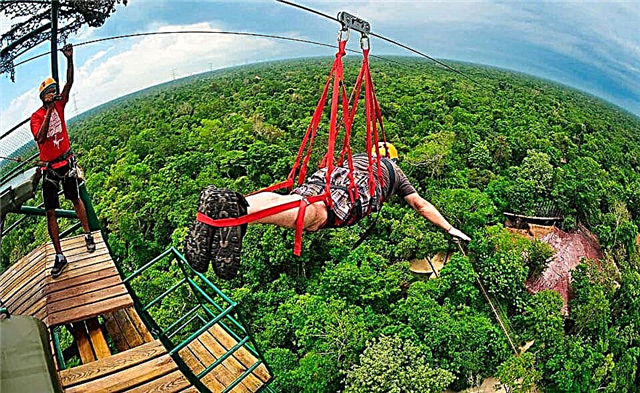
It will take about an hour to get to the extreme amusement park by car or bus. Xplor started operating in 2009. Its rides are designed for both adults and children. Surface area of the extreme park: 50 hectares. Caves and underground rivers, where recreational trails are laid, occupy about 8 hectares. There are entertainment programs in the park: day and night. It is not divided into thematic zones.
There are 4 categories of courage tests in Xplor, from which visitors can choose any, some or all. There are 13 slopes for bungee flights (track length: 4 kilometers), towers are installed along its entire length, whose height varies from 8 to 45 meters. A 10-kilometer track has been created for cross-country buggy rides.
A trip on wooden rafts along an underground river passes through mysterious caves filled with stalactites and stalagmites. Another route is offered by the organizers of entertainment programs to swim. Its length: 400 meters through underground caves, where visitors will see the skeletons of dinosaurs. The park operates on the All Inclusive system: it provides transfer services, meals, access to all attractions, photo and video recording of the exciting adventures of Xplor guests.


